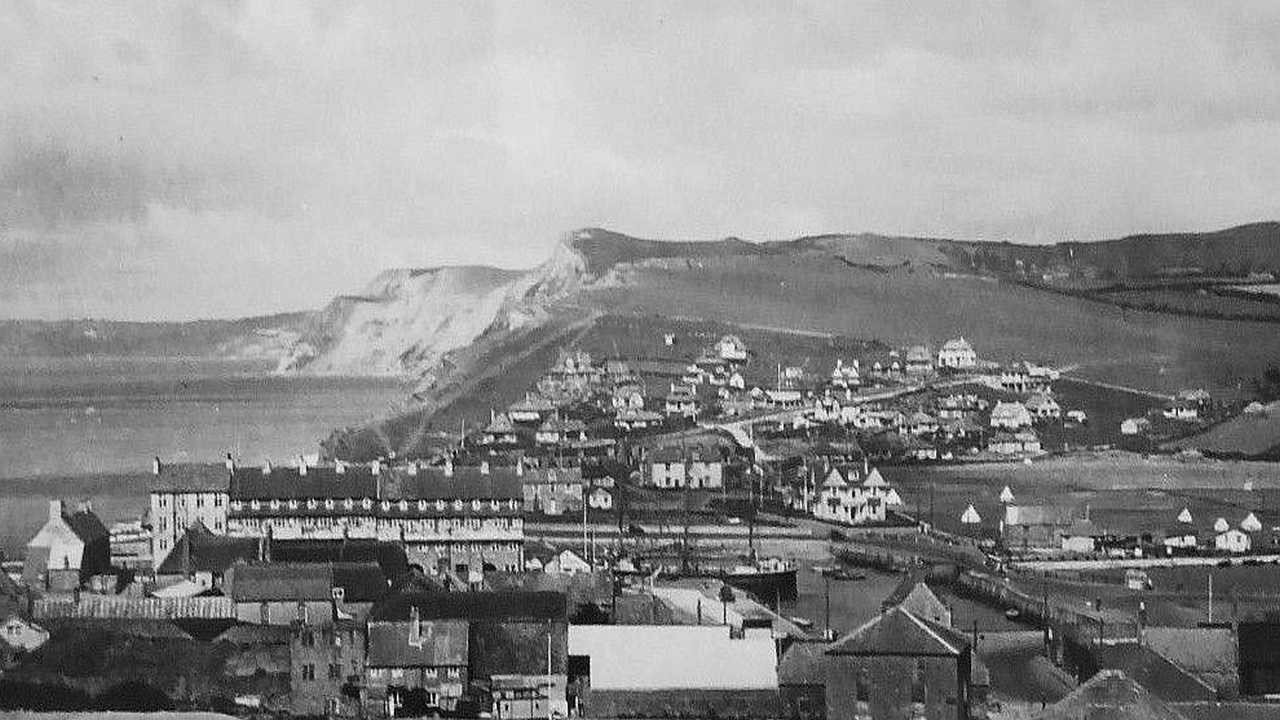



History of the West Cliff Estate
In 1914 a plot of land (15 acres) known as Watton Eweleaze on West Cliff was sold by the 6th Earl of Ilchester, to William James Guppy, Louis Henry Trevett and Samuel Gluning. The Earl reserved for himself a right of way, subject to an obligation of contributing a due proportion of the expense of maintaining the roads. An access strip of land 40 feet wide was also provided, hence Forty Foot Way.
In 1920 a syndicate was formed by the new owners. They built houses for themselves, then in 1921 split up the remaining land into building plots with covenants, to form the West Cliff Estate. The covenants were designed to maintain a good standard and provide a basis for the future recovery of the costs of maintaining the roads and drains.
Particular details of the covenant include:
No tree or shrub may be grown that unduly interferes with the views of other siteholders.
No wall or fence shall be constructed to a height greater than four feet six inches.
Not more than one house or bungalow with necessary outbuildings shall be built on each plot.
A house or bungalow shall be built on each plot with a construction price as follows (prices correct in 1921):
- Site 1 to 45 – Not less than £150 (all plots seaward side (southwest) of West Cliff Road)
- Site 46 to 53 – Not less than £100
- Site 54 to 58 – Not less than £75
- Each plot owner to pay a proportionate part of the expense of maintaining, repairing and cleansing the roads through the Estate and also of the sewers and drains thereunder, such payment being made according to the rateable value of his plot until they be taken over by the Public Authority.
In 1961 an adjoining field became available for sale. A covenant, corresponding to the original estate was to be included in the deeds of each house sold. Unfortunately the builders went bankrupt before completion and the development was taken over by another builder who claimed not to have been party to the covenant agreement and therefore not liable. The lower section of West Walk was slowly completed.
Around 1970 the upper estate was acquired by Messrs. T A Fisher & Co., who developed and extended further up West Walk together with Brit View Road. The problem of maintaining the roads was then becoming difficult and in 1972, the Trustees of the original estate sold all the verges to the Trustees of the West Cliff Residents and Ratepayers’ Association for the legal fees of £25. In 1974 the name was changed from “West Cliff Residents and Ratepayers’ Association” to “West Cliff House Owners’ Association”. Unfortunately the covenants on the three sections of the estate are not identical.
In 2011 following a Government directive, the local water authority became responsible for the foul sewerage system on the estate. The surface water system remains the responsibility of the House Owners’ Association or respective property owners, depending on pipework location. Gas, electricity and water supplies on the estate are the responsibility of the appropriate utility companies.
Note:- Due to the 1875 Public Health Act, all foul sewers irrespective of location were public. The 1936 Public Health Act changed the responsibilities, such that foul sewers on private land were only public if they had been in place before 1937. Therefore prior to 2011, all foul sewers on the lower estate had been the responsibility of the local water authority while sewers on the middle and upper estate had been the responsibility of the Association.
Why so many Covenants?
Covenants are imposed by the seller when they want to try and control something. They are binding upon the buyer and usually contain details of who can enforce them ( for example " the remainder of the sellers development at ....")
In our case the first ones were imposed by the sellers of the original lower estate plots and are of a nature to keep the estate private, of a good quality and to limit nuisance from one plot to another. These have quite specific rules about what can be erected on the plots because for the most part they were sold as plots and then the buyers built on them, often using original beach huts. By the time the middle estate was constructed and the seller imposed their covenants they had a dual purpose - to govern how the plot owners behaved towards each other and also to give financial control to the seller. These had more common parts regulations as they included the matters of the roadways and pavements which were actually included within the plot sales and needed to have rights reserved over them. The upper estate is different, whereby the developer retained the common parts (and later transferred them to the trustees) and therefore did not need so many mutual covenants. They also did not feel the need to control the nature of the properties because they had actually constructed them. They do however include requirements to make payments for certain things to the original developers.
- - - - - - - - - - -
See also this excellent presentation by Mr Basil Trevor-Morgan (Hon Sec 2000-2002) given to the AGM in 2002, titled "A brief history of the West Cliff Estate".
West Cliff c1935



